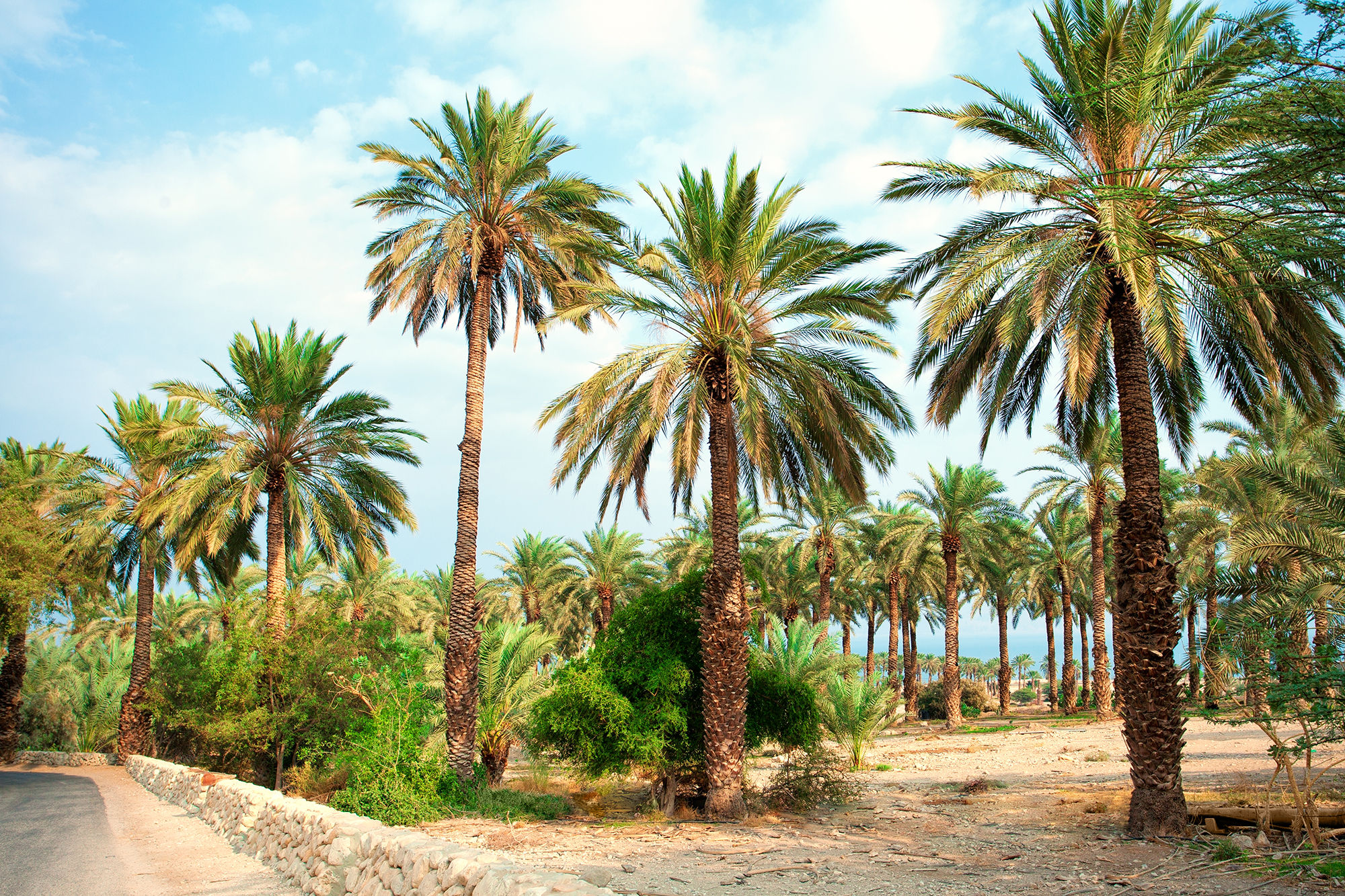During the time of the Roman Empire, the date palm was widespread in the desert of Judea. Now it has re-emerged, thanks to 2000-year-old seeds found in Masada and in the Qumran caves.
Sarah Sallon, an ethnobotanist at Hadassah Medical Center, and research colleague Elaine Solowey planted 2000-year-old date seeds in 2008. After only six weeks, one of these ancient Judean date palm seeds germinated and grew into a palm they named Methuselah.
”This is an astonishing result,” Robin Allaby, a geneticist at the University of Warwick, told the scientific journal Science in early 2020. ”It highlights the fact that we do not understand the long-term viability of seeds.”
The project, initially considered botanically impossible, has been featured in the New York Times, National Geographic, and other publications. Today, Methuselah has a permanent home in the research park of the Arava Institute at Kibbutz Ketura in southern Israel. The hope was that Methuselah, a male tree, could be mated with a female to produce the same variety of dates that existed in ancient Judea.
The problem was that a date palm cannot bear fruit on its own. Methuselah is a male, providing the necessary pollen for reproduction, while the females produce the flowers that bear fruit. To recreate the original dates of Judea, Methuselah needed a female partner.
Legendary Date Reappeared
Sallon and her team therefore searched the sand in the Judean desert where they looked for several seeds. They found 32 ancient seeds, some at Masada and others at Qumran – the famous site of the Dead Sea Scrolls.
With these seeds in hand, the team decided to adopt a more rigorous, scientific method. They soaked the seeds in water and added fertilizer and hormones to facilitate the seeds’ germination. Of these 32 seeds, six took root. The four male and two female plants were named Judith, Hannah, Uriel, Jonah, Boas, and Adam.
In 2015, Methuselah pollinated Hannah, and in 2020, Hannah finally bore dates, which took about three years longer than normal date trees. With this milestone, the legendary date of Judea was reborn. ”They thought I was crazy!” Sallon told National Public Radio (NPR) in 2020 when describing it to the archaeologists. ”They didn’t think this was even conceivable.”
Improbable Longevity
The improbable longevity of the seeds is largely due to the unique environmental conditions around the Dead Sea region. The area’s thick atmosphere, enveloped in a mineral-rich haze, helped protect the seeds from cosmic radiation. The area also has extremely dry conditions with minimal humidity, making it an ideal environment for preserving these seeds.
To establish that the seeds were indeed ancient – and not newer specimens mixed in with archaeological finds – the team carbon-dated seed-shell fragments at the roots after the seeds had successfully germinated. The seeds were between 2200 and 1800 years old, the team reported in the journal Science.
After the collapse of the Roman Empire and the Arab conquest of the region, date cultivation in Judea declined. By the time of the Crusades, a little under a thousand years ago, the area’s date plantations no longer existed.


